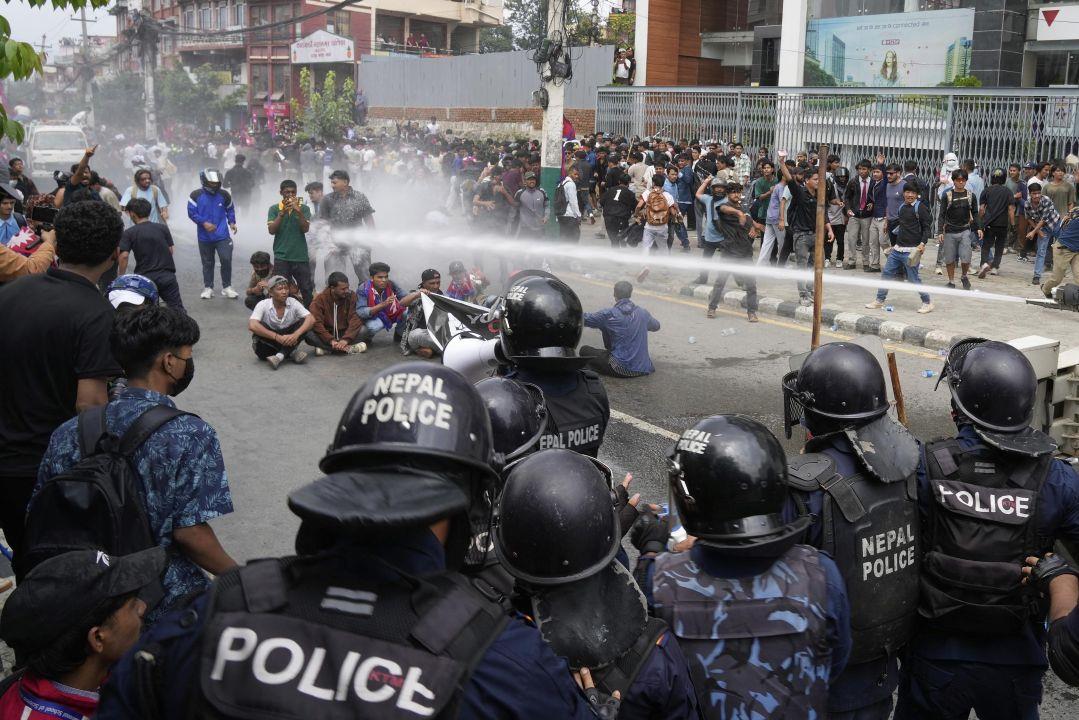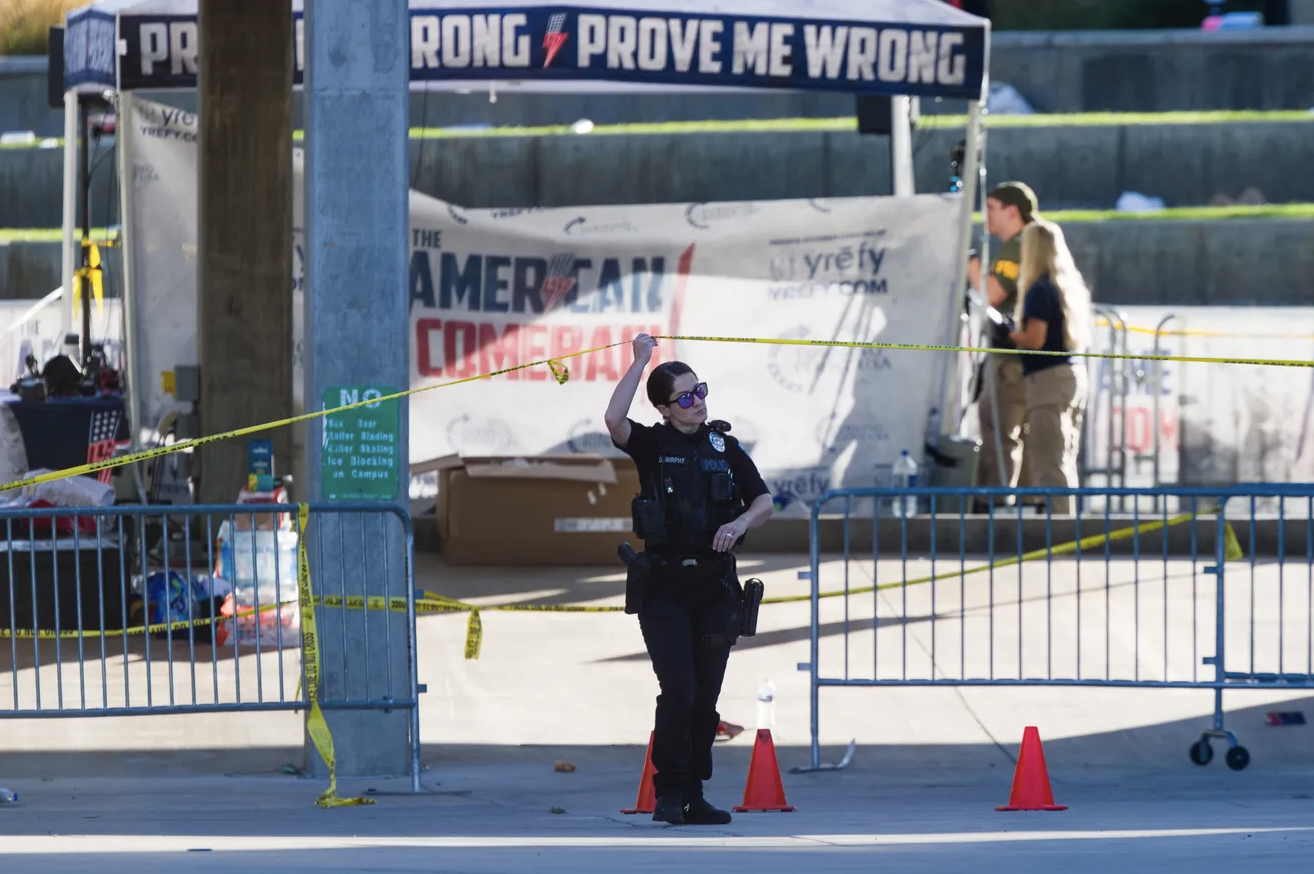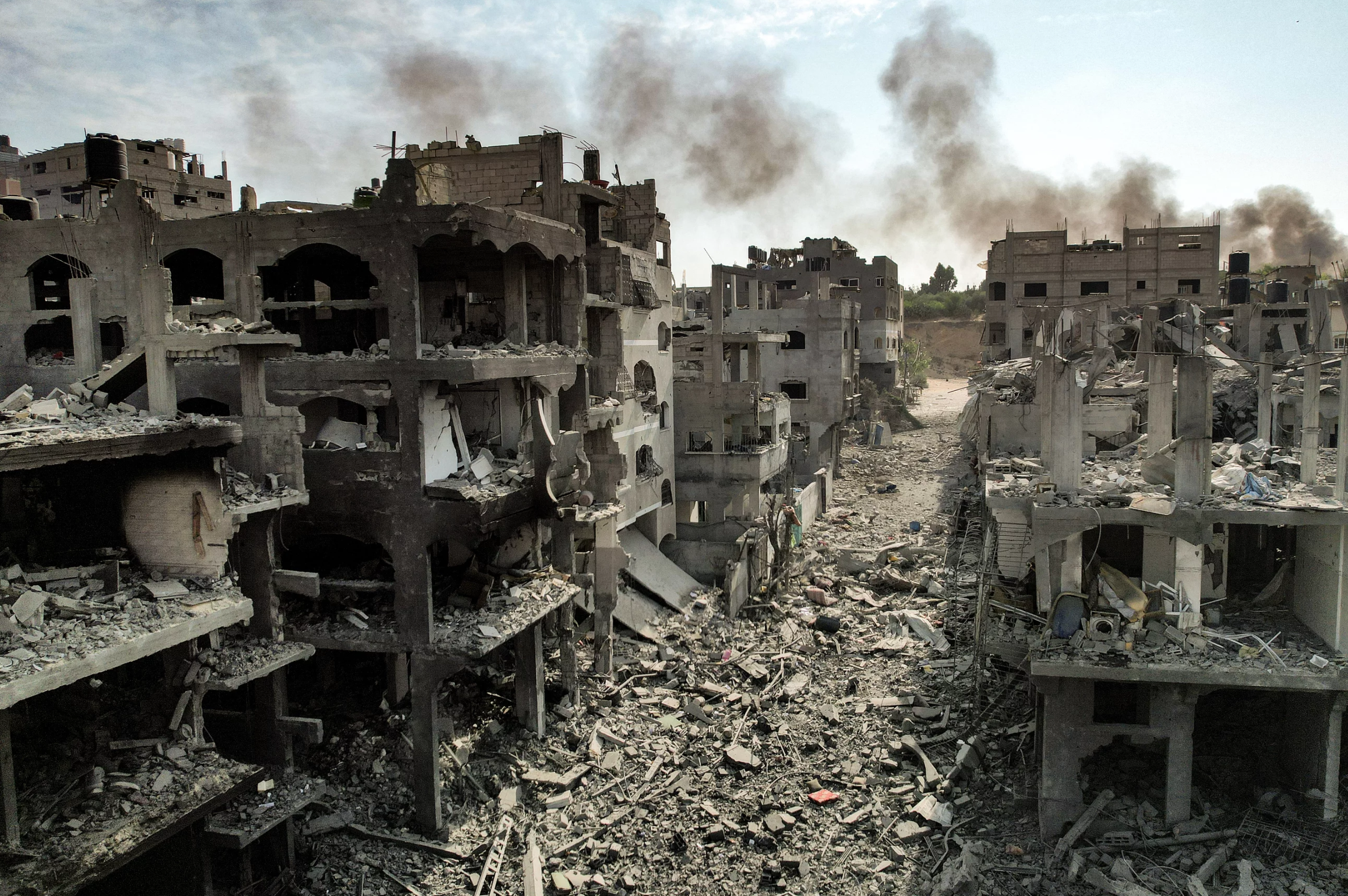The video starts out innocently enough.
It’s focused on a guy in a white T-shirt that reads “FREEDOM.” He’s sitting under a tent splashed with the words “American Comeback,” holding a microphone. Though the video angle is tight, you get the sense that he’s talking to a crowd.
There’s a single, piercing pop, and a whoosh.
Then blood, and chaos.
Almost in real time, millions of people watched right-wing activist and media personality Charlie Kirk get fatally shot in the neck by a single bullet while speaking at Utah Valley University.

The images described above are from just one of various close-up videos of the assassination that spread across social media. Because Meta, X, and TikTok all play videos automatically, many people saw extremely graphic footage of the killing before they could even register what they were watching. A comment on one video posted on Instagram read, “Damn I’ve seen a lot of people get shot online but this is one of the worst ones I’ve seen.” Another read, “Wtf instagram. That was too graphic for that to just show up on my [main] feed.” A third: “First post I seen when I opened ig btw” (followed by about 20 comments saying “Same here” or “Me too”).
“I wish I hadn’t seen it,” Jenna May told The Preamble. She clicked on a video of the shooting without knowing what it contained after it was sent in a family chat that announced Kirk had been shot. “That’s going to be in my brain forever and in a lot of people’s brains forever.”
But it’s not just this set of videos. We are subjected to a never-ending stream of violence and death every day, whether we are looking for it or not. This week alone, on top of the videos of Kirk, social media has shown us footage of the murder of a Ukrainian woman on a train in North Carolina, fatal clashes between security forces and protesters in Nepal, and much more. For a decade or so, as social media has occupied a greater percentage of our daily attention, we’ve all been privy to an endless stream of gruesome imagery.

These videos are not just hard to stomach. They are impacting our ability to be civically engaged — and adding heat to our already fiery political divide.
The Doomscroll
We used to rely exclusively on network TV for our news. Because the government owns the airwaves, those outlets have strict federal guidelines about what they can and cannot show, and to this day they usually edit or blur graphic footage.
But our media landscape has changed drastically. The advancement of smartphones and social media platforms has made it easier than ever to record and post, giving most people who have a cellphone the ability to scroll through bombings, stabbings, mass shootings, and battlefield combat without even intending to.
And that includes children, who even with parental controls are often able to view violent videos. This week, one 13-year-old came home from school and announced that Charlie Kirk had died. She told her mom that the blood spurting from Kirk’s neck was “crazy.” Even kids who had Instagram Teen accounts, for people aged 13–17, could find videos of the shooting. One mom said she trusted that the parental control on her 14-year-old’s accounts would prevent her from seeing Kirk’s death. It didn’t, because a friend texted her daughter the video.

And for US adults, more than half of whom say they get at least some of their news from social media, there are few or no guardrails. One social media user told The Preamble that at least a third of the videos they see on social media are violent — most come from TikTok or Instagram.
Following outrage over the video, TikTok said it was removing footage of Kirk’s shooting. Meta applied a “Mark as Sensitive” warning to the videos and said it was restricting access so that only adults could view it. YouTube also said it was removing some graphic videos of the Kirk shooting, especially if they didn’t have context. (X has few limitations on graphic content.) But days after the shooting, it is still easy on various platforms to find footage of Kirk’s death.
There’s a simple answer for why videos like these are not immediately removed: They get clicks. Algorithms highlight content that evokes anger and outrage because those extreme emotions are big drivers of engagement. In 2021, it was revealed that Facebook programmed its algorithm to push more emotional content and reward controversial takes, including content that would make users angry.
One college student, who preferred not to be identified, told The Preamble, “I believe that at least half of those accounts are seeking views and not actual action… It seems like people have a fear of not knowing what’s happening/having control over the situation, so we engage on social media because news outlets won’t air it.”

The mental impact
While viewers feel it's important to know and engage with news, there’s a fine line between staying in the know and viewing graphic content that damages you.
People who witness news of mass tragedies suffer harm to their mental health even if they have no connection to the event. After 9/11, for example, media exposure to images and specific stories of the attacks heightened depression and post-traumatic stress symptoms around the nation.
And if you view one violent video, you’re more likely to view the next.
“As time goes on, [people] become more and more worried, like, ‘Oh, is another event going to happen?’” Dr. E. Alison Holman, a co-author of a study about how media coverage of mass killings affects mental health, explained to The Preamble. “And then guess what? When the next event happens, guess what they're doing? They're back in the media, exposing themselves even more. And then they become distressed, and then they start to worry more, and then they go into the media again after the next event.”
Kids who spend more time on social media have higher rates of anxiety and depression, and one study showed that children who watch violent media were more likely to think aggressively. They might feel confused about what they saw and unaware of the impact it is having on them — as well as potentially unable to talk to their parents because they feel guilty for stumbling upon or seeking out graphic content.
The same college student told The Preamble, “On one hand, I feel a large amount of guilt for not devoting my time to help[ing] those in need while I carry on with my day. On the other hand, I feel very desensitized. It makes me view the world in somewhat of an animalistic way. It’s almost like being brainwashed into thinking that watching dying children or getting murdered on live television is not something to cause commotion over.”

A 2024 study showed that the more desensitized to an issue we are, the less likely we are to take action to combat it. Repeated exposure to traumatic content can lead to numbness and reduced empathy for what we’re seeing.
On the other hand, high levels of stress and anxiety can also lead to poorer regulation of emotions and larger, even violent, outbursts. That might be one reason why even when videos like the ones we saw this week of Kirk and Ukrainian refugee Iryna Zarutska lead to political discourse, it’s often not productive.
The college student told us, “I see a lot of my peers arguing over who is right and who is wrong, but in a rather atrocious way. The arguing is never civil and usually consists of name-calling, questioning one’s education, or death threats… Over the last couple years, it feels like there is a dark cloud rolling over America.”
A university staffer told The Preamble, “There is not a doubt in my mind that this is eroding our ability to be normal, nice people. I really think that it is dehumanizing. Humans are not meant to see these things, ever… It not only gets everyone upset but everyone is upset about different things at the same time.” He added that “there is a drive to divide the left and the right and it seems to be a concerted effort.”

The violent rhetoric in response to graphic footage seems to confirm his observation. On the videos of Kirk, there are comments from people calling for revenge on “the left” for killing someone on the right. With such videos now part of their normal media consumption, people feel more free to call for violence against their perceived enemies.
What can you do?
No one can change our media and political culture singe-handedly. But refusing to hand over your most valuable asset — your attention — can help deprioritize violent content in the algorithm. And it’s possible to take steps to shield yourself. Experts say to limit your time on social media — but even limited time still might mean accidental exposure to violent content. Dr. Holman recommended engaging online only with people you know or trust.
She also said to be aware of what’s going on in your body and look for stress signals — racing heart, tense shoulders, shallow breathing. “Anxiety spreads to other people, she said. “It's the most contagious emotion that we know of. But compassion is also very contagious… If you do one small act of kindness or behave in a compassionate way toward another person,” even when “you're feeling the most distressed,” it “makes you feel better.”
So be kind to your friends and family. Talk to them about what you’re seeing. Ask your kids about what they experienced online. And know that it's okay not to send that video to a friend, or click on it when your friend sends it to you.